Intonation is an integral part of your flute tone. If a flutist has an unfocused sound with bad tone quality they will generally be out of tune. On the flip side, a flute player with a focused tone quality will most likely be secure in pitch control as well. This is why before trying to solve flute intonation problems, it is actually better to really focus on improving your tone production.
When we say ‘playing in tune’ we are referring to a flute player adjusting the pitch of their tone to match a reference tone. For example, the usual note to tune to is an A. If your A has a higher pitch than the other instruments around you the notes will clash and not sound nice together.
Tone and intonation – What’s the link?
Tone and intonation are products of the same physiological mechanisms.
Bad tone production can signal that the flute Embouchure formation is not set up correctly. Your embouchure is in control of your air stream, air speed and air direction. If you do not have your embouchure and indeed the embouchure hole in the proper position then there is a good chance that you will not have a good tone.
Having a solid and beautiful sound on the flute is perhaps the most important aspect of flute playing, it is what sets flute players apart.
If you are creating a good tone, this will imply your Embouchure is in the correct position. A strong Embouchure will have a good balance between the bottom lip and top lip. Generally the bottom lip will be more fixed so that the upper lip can have a bit more flexibility. If your Embouchure is not in a solid position you will restrict your flexibility and create tension. In turn, this will mean you will not be able to make the minor adjustments needed for improving flute intonation.

Posture
Flute intonation can also be affected by your overall posture, much like how if you want to produce a good tone then this will also require a solid foundation in the body.
Poor posture can affect all aspects of the playing but in particular it can cause flute intonation problems. If you collapse your posture you are going to affect your air stream, air speed and then in turn this will affect your tuning.

What is intonation?
Before learning how to control our flute pitch and intonation it is important to understand exactly what intonation is.
Intonation literally refers to your pitch accuracy in relation to an outside tone. It is to do with the frequency of sound. Most ensembles and orchestras use the reference pitch A=440. However, this is not universal.
Instruments nowadays use an equal temperament scale. This simply means that there is an equal distance between every note. Prior to this, there would be different tunings for every scale you used.
In the 18th century flute players had to carry different middle sections of their flutes to change with the regional tuning of where they were playing, so we should feel lucky we now do not have to do this!
Tuning the flute – the beginning
Unfortunately, good flute intonation is not automatic and so it is extremely important to practice intonation.
It is also important to know that the weather and climate can affect flute intonation. This is more of a problem for wooden flutes and piccolos than metal instruments but it is important to know. Air temperature affects the pitch of wind instruments because of the different air weights. Cold air is heavier than warm air. As the temperature rises the rate of molecular motion increases with the flute tube, so density decreases and the pitch rises. Rise and fall of temperature is very much parallel to pitch.
With this in mind it is therefore important to warm up before playing in order to make the instrument room temperature.
To warm up you must cover the mouth hole completely, close all keys with fingers and blow warm air into your flute. Once you have warmed up you can then tune your A either to the piano or the oboe in the case of orchestral playing.
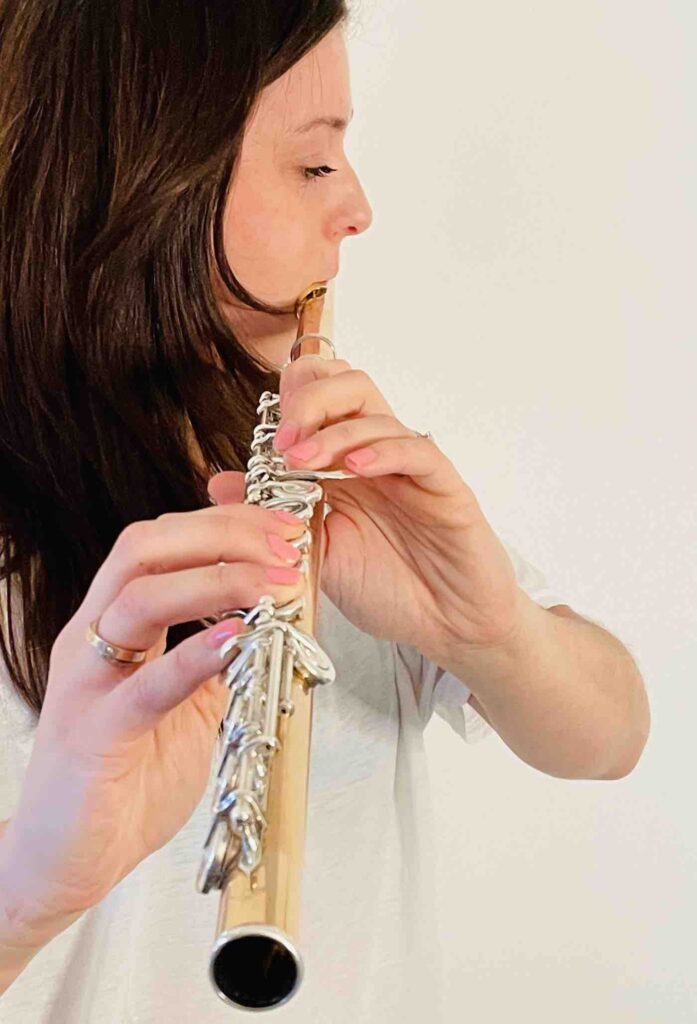
As you play, the flute will heat up so you may find that you need to pull out your head piece, more on this later!
How to tune the flute
It is extremely important to tune your flute when playing with other musicians. If you are playing with a piano, the pitch of the piano will be what you tune to. The piano is unable to alter their tuning so this is why we will alter our tuning. If you are playing with an orchestra you will tune to the oboe.
The most common pitch to tune to is the note A. You should ask the piano to play the tuning note A and then you should play the same note. Listen carefully to your note and compare it to the piano note.

The flute has its own ‘tuning slide’ – the head joint! The flute is designed to have the head piece pulled out by 2cm or so to be in tune. Any more or less than this there is a different issue that you will need to adjust. Once you have set the flute up like this then make sure to begin tuning to the tuning note.
If your note sounds higher than the piano or oboe’s note (sharp), you will need to make an adjustment with the head piece. Pulling out the head piece will lengthen the tube of the flute and lower the pitch so you become flatter.

If your note sounds lower than the piano or oboe’s note (flat), you will need to make an adjustment with the head joint. Pushing in the head joint will shorten the tube of the flute and raise the pitch.
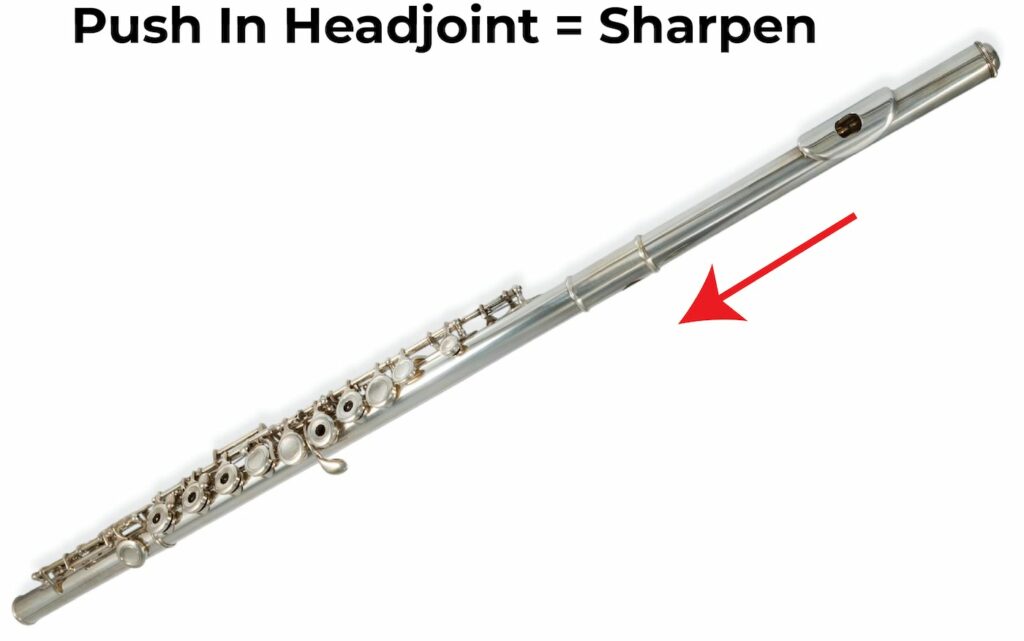
As the flute intonation can be affected by many different aspects as we have seen, tone, weather, posture and more it so important that tuning becomes part of your every day playing.
After Tuning, Will All notes be in tune?
Unfortunately, the flute is not 100% acoustically sound and therefore you do need to learn which aspects of your flute your may need to compensate for. For example you may find that your B has a slightly raised pitch and so when playing you will need to make a slight adjustment to that particular note. We look at how to do this later on this post.
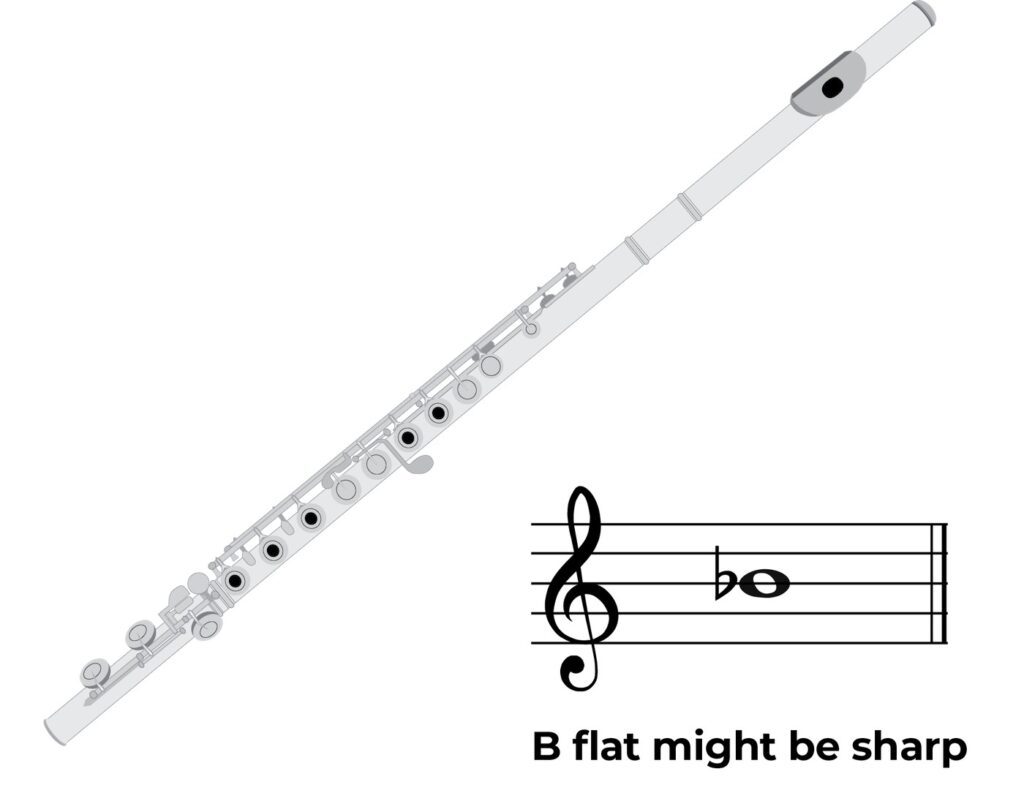
There are some very common notes on the flute that are almost always out of tune. Trevor Wye for example labels high E and F# as gnomes of the top register of the flute in his book as they are a lot sharper and more difficult to play. The reason for these two notes having an issue is because they are the only notes between Eb and Bb where two holes are open. They would be much easier to play if just one hole was closed.
Many flutes nowadays do have a split e mechanism which does this but you can compensate for this simply with the lips and breath.
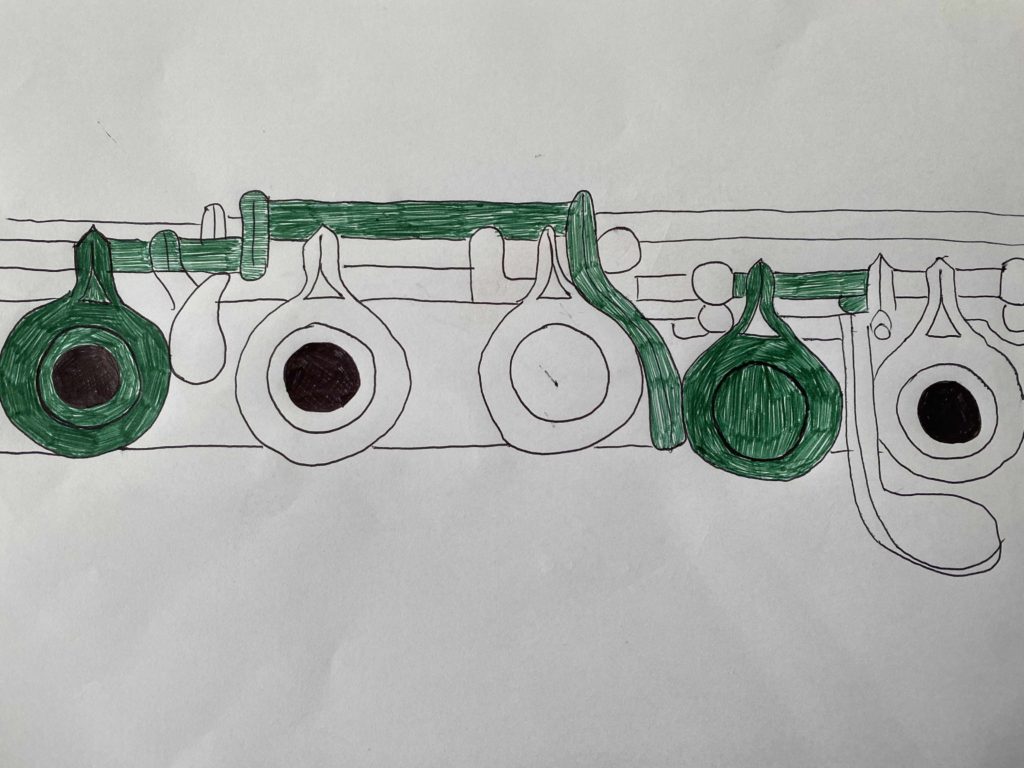
Altering different notes once you have tuned
Pulling the head piece in and out of the flute is your first port of call when tuning. This will ensure that everything is optimal, from here you may have to do minor adjustments in different ways to ensure the intonation is correct for every note.
You can modify the pitch of the flute by changing the pressure and direction of the air stream, altering how much embouchure hole you cover and also the lip aperture size. The most common way to affect the tuning is by altering the air stream.

Being able to be flexible with your playing is extremely important as there is no single correct pitch for each note as the function of a note is affected by what note it is in a scale. For example, a leading note (seventh note) will function differently to a mediant note (third note).
When playing in an ensemble you must also constantly do minor adjustments to play with the ensemble and adjust to each instrument around you to ensure the intonation within the group is in line!
You may also find that different dynamic levels can affect your tuning so it is important to develop ways to adjust one note at a time and not always every note. Dynamic range is extremely important but it is more important to play in tune first!
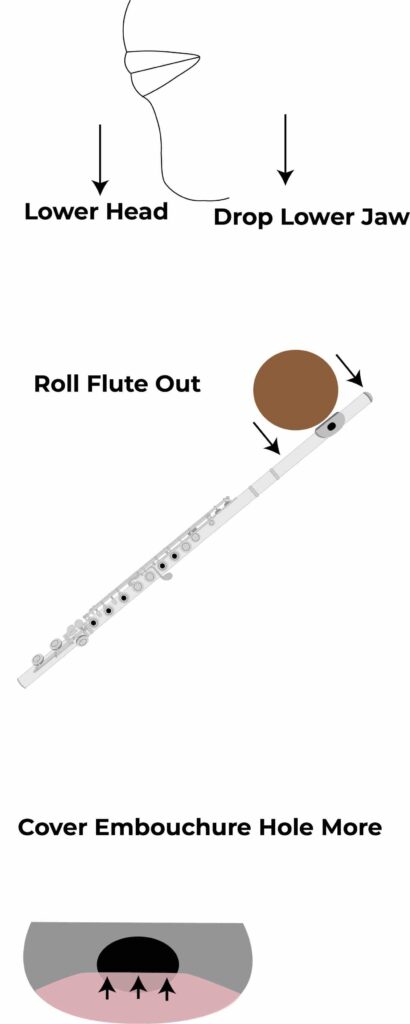
To lower pitch (flat pitch) on the flute there are a few different ways you can do this.
- Drop the lower jaw and lower your head
- Roll the flute outwards and pull the corners of your mouth backwards
- Cover the embouchure hole more with the lower lip and pull the upper lip down to direct the airstream into the flute.
If you want to use air pressure to lower the pitch, you must decrease it. You can do this by blowing more softly and decrease diaphragm and lip pressure.
If you want to use the lip aperture to lower the pitch, you must increase the size of the aperture of the lips. By doing this, the air stream will then become weaker, meaning that the air will diffuse more. This will mean that the pitch will become lower. However, diffusing the air in this way will affect your sound.
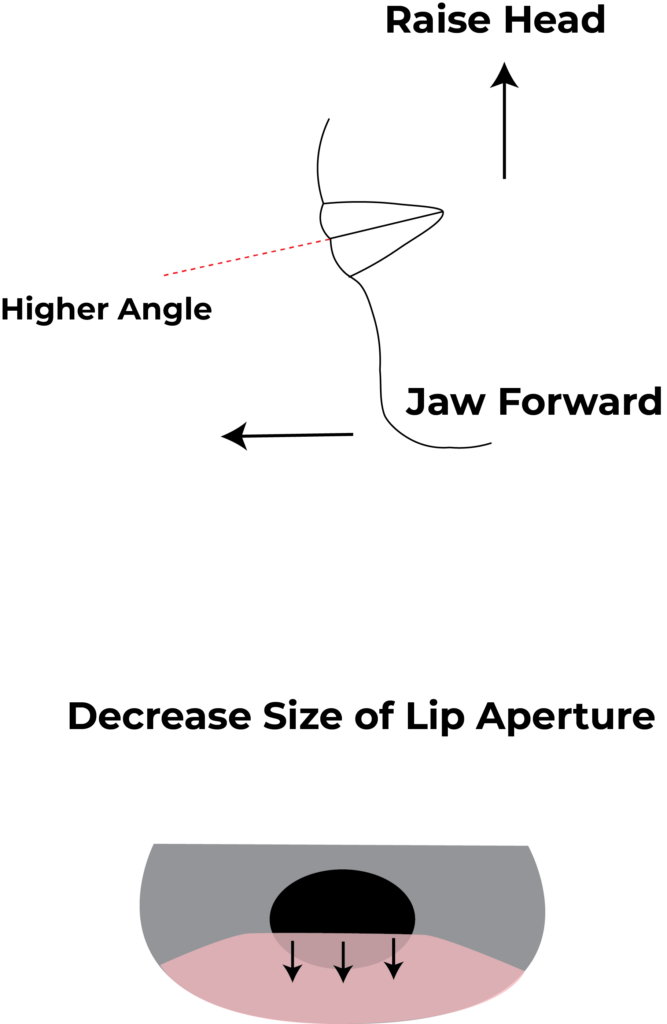
To raise the pitch you must do the exact opposite to the above.
- Raise your head
- Move your lower jaw (lower lip) forward
- Blow over the hole at a higher angle
- Blow less air into the flute
- Increase the air pressure and therefore air speed
- Increase the lip pressure
- Decrease the size of the lip aperture
Use these different methods when you play your instrument and find which work best for you.
Alternate Fingerings
You can also use alternate fingerings to help eliminate flute intonation problems. On open hole flutes it is also possible so correct the pitch of some notes by slightly venting the key by uncovering the hole slightly. This is a variation of half holing which was used for recorders and wooden flutes. Obviously you cannot do this on closed hole flutes!
To know more about these alternate fingerings make sure to buy James Pellerite’s ‘A modern guide to fingerings for the flute’.

Check Your Headjoint Cork
Poor tuning can also arise from the cork placement within the head joint. Flute makers design their flutes to generally be in tune with itself at A=440 or 442. However, in order for this to happen it is vital that you do not alter the position of the head joint cork.
In order to check your cork placement, you can take your cleaning rod. At the bottom of the cleaning rod there is a small line.

This line should be exactly in the middle of the embouchure hole on the head piece.

The crown is at the very top of the head piece and can be unscrewed, but this is not advised. SO make sure you do not mess with the crown!
The ideal placement of the cork is 17mm and you can measure this with the cleaning rod as we saw above. Although don’t try and alter the cork yourself if it is off. Make sure to take it to a flute repairer so you do not damage your instrument.
How does the cork affect the tuning of the instrument?
If the cork moves too close to the crown, the high notes on the instrument will be flat but in contrast, when you play low notes these will be sharp.
On the flip side, if the cork is too close to where you blow, the opposite will happen. The high notes will be sharp and the bottom notes will be flat.
What is the flute cork?
The flute cork is very much like a cork in a wine bottle! When it is compressed, it expands and creates a tight seal. It can also be additionally sealed using paraffin wax. As the cork ages, it can begin to shrink which in turn makes the flute lose it’s seal.
Some flutists prefer now to use a different material for their cork stopper, such as metal or plastic. Using a different material can really affect the resonance of the flute.
The difference between tuning and intonation on the flute
Throughout this blog we have talked about flute intonation and tuning interchangeably. However, there is a difference!
Tuning is how your flute is set up. Making sure the cork is in the correct place, the head joint is pulled out the correct amount and each tone hole is equally spaced. The head joint is the only real control you have here!
Intonation is slightly different as it refers to how you play your instrument. Think about this, you would not adjust the flute set up for each individual note, instead you will adjust your air stream, air speed, embouchure and more.

Common Intonation Problems
So with that in mind, what are some common flute intonation problems we often see with our instrument?
- A problem with air speed – if air speed is too slow you will go flat but if the air speed is too fast you will go sharp.
- A problem with the angle of your air stream – we saw that you can move your lip forward to raise pitch up. However, raise this too much and the sound can go sharp and produce an airy sound. If you aim your air stream too far down then you will go flat.
- Aperture size – if the hole in your lips is too wide then this will also drastically affect your intonation as the air will be too diffused.
- Coverage of the blow hole – Cover too much of the hole and you will go flat and cover too little you are in danger of going sharp.
All of these common errors also give you ways to adjust the flute whilst playing.
Important tools you need to help play in tune
It can be very helpful to have a tuning rod and an electronic tuner at home to help with your flute pitch. Poor intonation will make it very hard for you to take part in ensembles so it is very important to practice intonation at home!
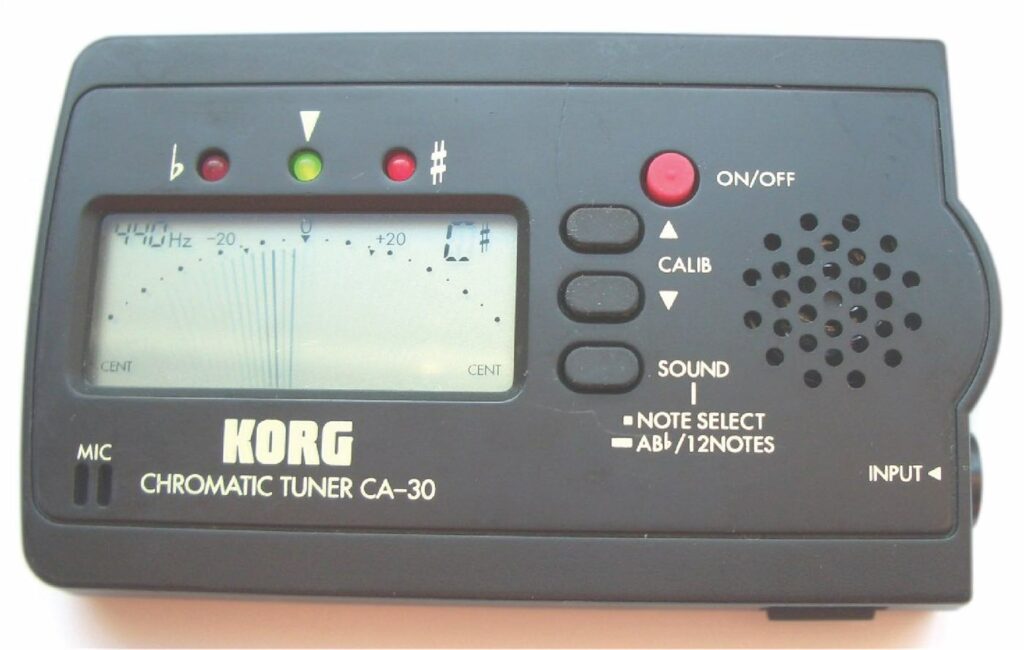
What’s next…?
- Learn more about getting the perfect embouchure
- Read more article on flute playing and technique.
